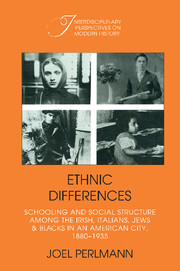 Ethnic Differences
Ethnic Differences Summary
The eastern European Jewish immigration was the critical event in American Jewish history. Like the Italians, the Jews from eastern Europe began arriving in the United States in large numbers just after 1880. The migration increased in magnitude with each succeeding decade, until American immigration restriction ended it in the early 1920s. Although Jews had come to the United States in earlier years, especially from central Europe, those earlier migrations were dwarfed by the numbers in the later migrations. By 1900, moreover, the Jews were the second largest immigrant group, after the Italians, to enter the United States each year. Many more Italians arrived between 1899 and 1924, the years for which the most reliable figures are available. However, a far higher proportion of the Italians also departed, so that there were nearly as many Jews among the immigrants who remained. In all, between 1880 and 1924, some 2.3 million eastern European Jews came to the United States.
In the history of American immigration, the Jews hold a special place for reasons other than sheer numbers. Jewish immigrants and their offspring improved their economic standing more rapidly than other groups did. Moreover, the story of their rise is closely bound up with schooling. Finally, as we shall see, their schooling itself is a striking example of distinctive school behavior on the part of an ethnic group, quite apart from its relation to economic advancement.
Information
- Type
- Chapter
- Information
- Ethnic DifferencesSchooling and Social Structure among the Irish, Italians, Jews, and Blacks in an American City, 1880–1935, pp. 122 - 162Publisher: Cambridge University PressPrint publication year: 1988